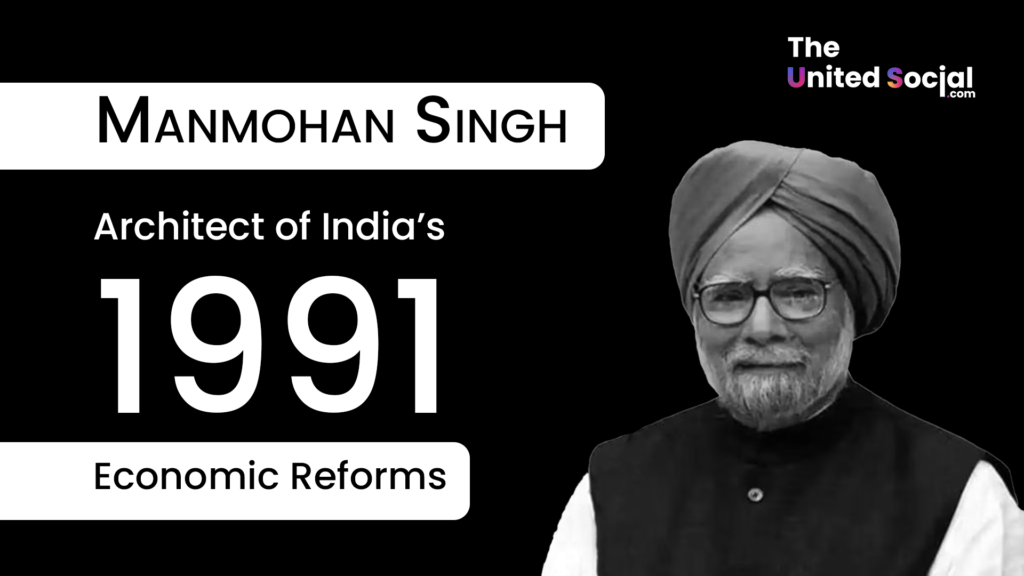Dr. Manmohan Singh: Architect of India’s Economic Liberalization
When discussing the economic evolution of India, one cannot overlook the monumental contributions of Dr. Manmohan Singh, India’s Prime Minister from 2004 to 2014. However, long before he donned the mantle of Prime Minister, Dr. Singh played a pivotal role as India’s Finance Minister in 1991—a year that marked a watershed moment in the country’s economic history. His bold and visionary budget announcement in July 1991 laid the foundation for India’s transition from a struggling economy to an emerging global powerhouse.
The 1991 Crisis: A Nation on the Brink
The early 1990s were turbulent for India’s economy. A severe balance of payments crisis had left the country with just enough foreign reserves to cover three weeks of imports. High fiscal deficits, stagnating growth, and rampant inflation created a sense of impending doom. This was compounded by global events such as the Gulf War, which had driven oil prices sky-high, further depleting India’s fragile reserves.
Amidst this storm, a newly elected government led by Prime Minister P.V. Narasimha Rao appointed Dr. Manmohan Singh as the Finance Minister. The stage was set for reforms that would redefine India’s economic trajectory.
The Historic 1991 Budget Announcement
Dr. Singh’s maiden budget speech on July 24, 1991, was more than a policy document; it was a roadmap for India’s economic rebirth. Some of the key reforms introduced were:
1. Liberalization of Trade and Investment
Dr. Singh dismantled the License Raj, a complex system of licenses, quotas, and permits that had stifled entrepreneurship. By removing these barriers, he opened the doors for private and foreign investment, paving the way for India’s integration into the global economy.
2. Devaluation of the Rupee
The Indian Rupee was devalued to make exports more competitive and attract foreign exchange. This step, though controversial at the time, proved critical in stabilizing India’s foreign reserves.
3. Reduction of Import Tariffs
Import duties were slashed significantly, signaling a shift from protectionism to a more open and competitive market.
4. Tax Reforms
Simplification of tax structures and the introduction of new tax policies aimed to boost revenue while encouraging compliance.
5. Privatization and Deregulation
Public sector reforms were introduced to improve efficiency, while several industries were deregulated, allowing private players to enter sectors previously dominated by the government.
Impact of the Reforms
The immediate effect of these reforms was the stabilization of India’s economy. Over time, the country witnessed remarkable changes:
- Economic Growth: India’s GDP growth rate surged, averaging around 6% annually during the 1990s.
- Foreign Investments: Foreign Direct Investment (FDI) began flowing into India, fostering growth in sectors such as IT, manufacturing, and services.
- Global Recognition: India emerged as a key player in the global market, with its IT industry becoming a major export powerhouse.
- Improved Living Standards: The liberalization led to job creation, higher incomes, and greater access to goods and services for the common citizen.
Manmohan Singh as Prime Minister: Building on the Reforms
As Prime Minister, Dr. Singh carried forward the vision of a liberalized India. Under his leadership, India navigated the 2008 global financial crisis relatively unscathed and achieved consistent economic growth, becoming one of the fastest-growing economies in the world.
A Legacy of Vision and Pragmatism
Dr. Manmohan Singh’s 1991 budget announcement was not just an economic reform—it was a paradigm shift that redefined India’s destiny. His courage to implement bold changes amidst an economic crisis and his commitment to transparency and global engagement made him one of the most respected leaders in India’s history.
At The United Social, we celebrate visionaries like Dr. Manmohan Singh, who inspire us to think big, act decisively, and embrace change. Dr. Singh, who passed away on December 26, 2024, at the age of 92, leaves behind a legacy of resilience, wisdom, and transformational leadership that will continue to guide India’s economic aspirations.
In today’s fast-paced digital world, the lessons from 1991 remind us of the importance of innovation and adaptability—qualities that remain at the core of our mission.


